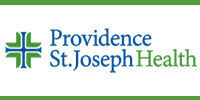- August 1,2025 | ISSN 1940-6967
- The National Association Of Medical Doctors
Featured Sponsors
Here's Why Surgeons May Die Sooner Than Other Physicians
By Jennifer Henderson
An analysis of death certificate data showed that surgeons had a higher mortality rate than non-surgeon physicians.
However, the mortality rate for other highly educated workers was similar to that of surgeons, while the rate for all other workers was higher.
Researchers said that long work hours, high-pressure environments, workplace violence, and occupational exposures may play a role.
Despite similarities in education and income levels, surgeons had a higher mortality rate than non-surgeon physicians, according to an analysis of death certificate data.
The age- and sex-adjusted mortality rate per 100,000 population was 355.3 for surgeons versus 228.4 for non-surgeon physicians, corresponding to a mortality rate ratio (MRR) of 1.56 (95% CI 1.36-1.78), reported Anupam Jena, MD, PhD, of Harvard Medical School and Massachusetts General Hospital in Boston, and colleagues.
However, the mortality rate for another highly educated comparator group, including lawyers, engineers, and scientists was similar to that of surgeons (404.5 per 100,000 population; MRR 0.88, 95% CI 0.77-1.00), while the rate for all other workers was higher (632.5 per 100,000 population; MRR 0.56, 95% CI 0.49-0.64), they noted.
"Given the demands of surgical practice -- including long work hours, high-pressure environments, workplace violence, and occupational exposures (e.g., radiation) -- surgeons might be particularly vulnerable to health risks," Jena and team wrote.
Certain causes of death were more common among surgeons. For instance, motor vehicle collisions were the fourth leading cause of death for this group, but the ninth leading cause for the three other occupation groups.
"Most research on physician mortality (including one we previously did) treats doctors as a single group," co-author Vishal Patel, MD, MPH, of Harvard Medical School and Brigham and Women's Hospital in Boston, said in an email.
"But surgeons have a very different day-to-day experience than other physicians. Long hours, physical demands, night shifts, and a culture that can discourage asking for help -- all of which may take a toll on health," he said. "Yet, until now, no national data have really looked specifically at how surgeons are doing in terms of longevity or leading causes of death. This study helps fill that gap."
"Surgeons didn't share the mortality advantage we've seen in other doctors," Patel noted. "In fact, they had higher death rates than non-surgeon physicians -- especially from cancer. We also found that deaths from motor vehicle crashes and assault were relatively more common among surgeons as well."
"Surgery is a demanding profession, both physically and psychologically," Patricia Turner, MD, MBA, executive director and CEO of the American College of Surgeons (ACS), who was not involved in the study, said in an email.
"While the paper does not provide the underlying reasons why some outcomes are higher among surgeons, it's a reminder that we must conduct more research, and must help surgeons reduce burdens that detract from building and maintaining practice environments conducive to their well-being," she added.
Turner noted that ACS provides resources and support to help colleagues "manage the stress and strain of this essential work."
Indeed, although neoplasms and heart disease were the first and second leading causes of death, respectively, across occupation groups, mortality from neoplasms was higher among surgeons (193.2 per 100,000 population) versus any other group, including non-surgeon physicians (87.5 per 100,000 population; MRR 2.21, 95% CI 1.75-2.80), Jena and colleagues reported.
Deaths from hypertension and assault were the eighth and ninth leading causes of death among surgeons, but were ranked 15th and 14th for non-surgeon physicians.
The findings "indicate that several causes of death (e.g., motor vehicle collisions) disproportionately affect surgeons, aligning with evidence that hazardous driving events associated with extended work hours are especially pronounced among surgeons," Jena and colleagues noted.
"Research is needed to understand other observed mortality patterns among surgeons, such as elevated cancer-specific mortality and assault," they added.
Ultimately, Patel said, the study's findings "should prompt a closer look at the pressures of surgical life -- both in training and in practice."
"It's not just burnout or job dissatisfaction we should be worried about -- it may also be affecting health and costing lives," he explained. "Organizations may need to reconsider expectations around work hours, call schedules, and wellness support, not just for mental health, but for physical health."
For this analysis, the researchers used death certificate data for adults ages 25 through 74 using the 2023 National Vital Statistics System, a registry of all U.S. deaths. They included 1,080,298 decedents, including 224 surgeons and 2,740 non-surgeon physicians.
A limitation of the study was the inability to examine year-to-year variations in mortality since only 2023 data were available, Jena and colleagues noted.
Articles in this issue:
- The Doctor Will Sue You Now
- Here's Why Surgeons May Die Sooner Than Other Physicians
- 5 Risk Factors At 50 Can Steal A Decade Of Life
- Confessions Of A Lipidologist In Recovery: The Infection We’ve Ignored For 40 Years
- The Hardest Medical Schools To Get Into
- Research On Reversing Alzheimer’s Reveals Lithium As Potential Key
- Why Your Arm Shape Skews Blood Pressure Readings
Top Physician Opportunities
Journal of Medicine Sign Up
Get the Journal of Medicine delivered to your inbox.
In This Issue
- The Doctor Will Sue You Now
- Here's Why Surgeons May Die Sooner Than Other Physicians
- 5 Risk Factors At 50 Can Steal A Decade Of Life
- Confessions Of A Lipidologist In Recovery: The Infection We’ve Ignored For 40 Years
- The Hardest Medical Schools To Get Into
- Research On Reversing Alzheimer’s Reveals Lithium As Potential Key
- Why Your Arm Shape Skews Blood Pressure Readings
Archives
Masthead
-
- Editor-in Chief:
- Theodore Massey
- Editor:
- Robert Sokonow
- Editorial Staff:
- Musaba Dekau
Lin Takahashi
Thomas Levine
Cynthia Casteneda Avina
Ronald Harvinger
Lisa Andonis
Leave a Comment
Please keep in mind that all comments are moderated. Please do not use a spam keyword or a domain as your name, or else it will be deleted. Let's have a personal and meaningful conversation instead. Thanks for your comments!















*This site is protected by reCAPTCHA and the Google Privacy Policy and Terms of Service apply.